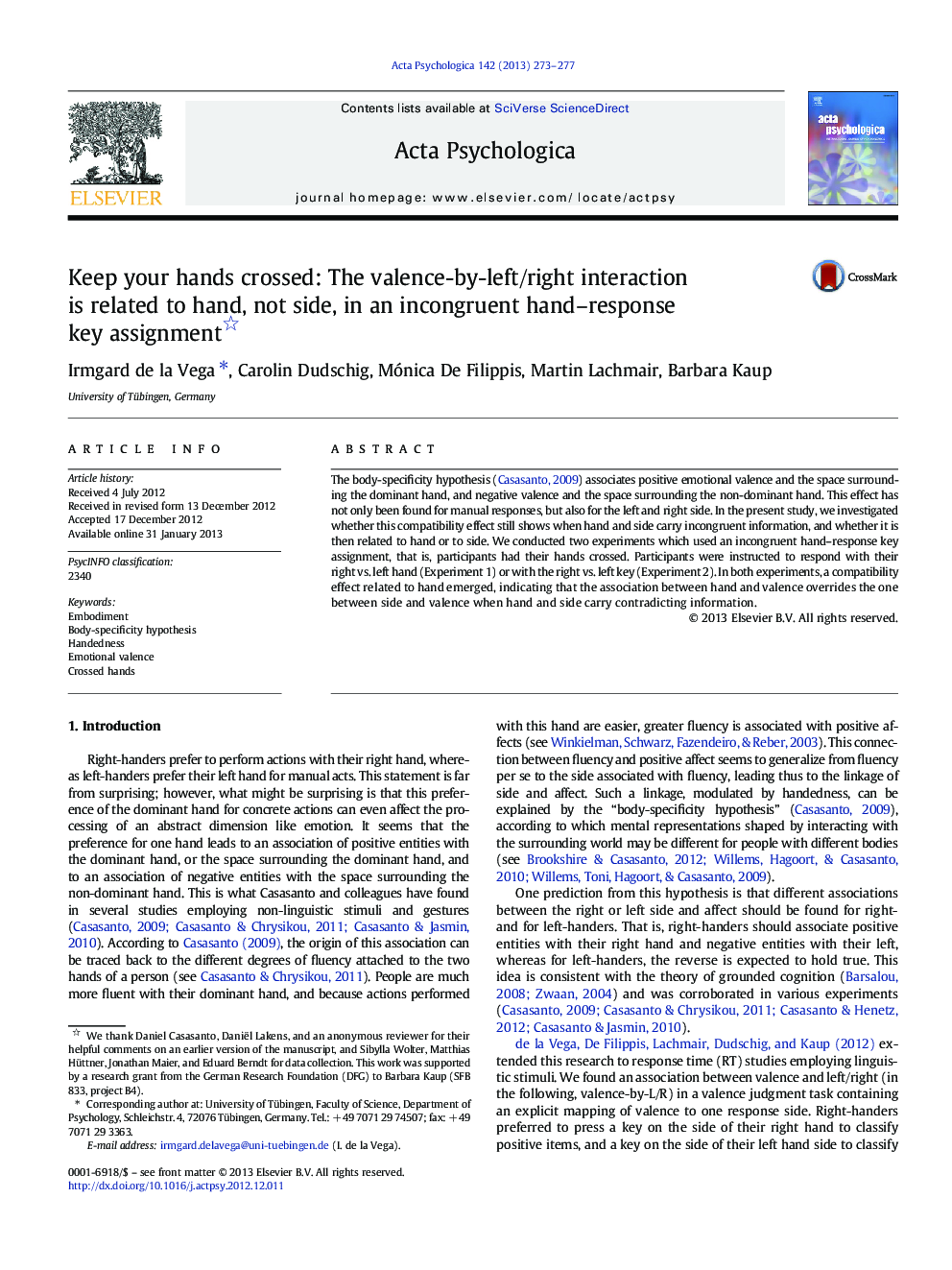| Article ID | Journal | Published Year | Pages | File Type |
|---|---|---|---|---|
| 919891 | Acta Psychologica | 2013 | 5 Pages |
The body-specificity hypothesis (Casasanto, 2009) associates positive emotional valence and the space surrounding the dominant hand, and negative valence and the space surrounding the non-dominant hand. This effect has not only been found for manual responses, but also for the left and right side. In the present study, we investigated whether this compatibility effect still shows when hand and side carry incongruent information, and whether it is then related to hand or to side. We conducted two experiments which used an incongruent hand–response key assignment, that is, participants had their hands crossed. Participants were instructed to respond with their right vs. left hand (Experiment 1) or with the right vs. left key (Experiment 2). In both experiments, a compatibility effect related to hand emerged, indicating that the association between hand and valence overrides the one between side and valence when hand and side carry contradicting information.
► An association exists between emotional valence and the left-right dimension ► This association still shows in an incongruent hand-response key assignment ► In such an assignment, the association is related to hand, not side ► This suggests that body-specific associations are due to fluency of the hand
